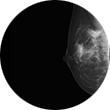
What is a Breast Biopsy?
A breast biopsy is a medical procedure that extracts a tiny sample of breast tissue from the body for the purpose of testing. A breast biopsy may be performed in women who have detected a lump during physical examination, or in women whose screening mammography revealed a potential lesion. There are several different types of breast biopsy.
Why are Breast Biopsies Performed?
Breast imaging procedures help patients and their physicians detect potential abnormalities in breast tissue. Breast imaging procedures can also help physicians rule out cancer in some women who have detected a potential abnormality. However, a breast biopsy is required for physicians to make a conclusive breast cancer diagnosis.
Different types of breast biopsies are performed for different reasons. If a woman’s physician recommends a biopsy, she should ask why.
What to Expect From a Breast Biopsy
Breast biopsy experiences will vary based on the type of biopsy being performed. Image-guided biopsies use medical imaging technologies during the process to help physicians locate problem areas. The type of breast biopsy a physician recommends will depend on a patient’s specific circumstances, such as the location and size of a lesion in her breast.
The different types of breast biopsy include:
Fine Needle Aspiration Breast Biopsy
In a fine needle aspiration breast biopsy procedure, an extremely thin needle attached to a syringe is used to extract a small amount of cells from a woman’s breast tissue. Fine needle aspiration biopsy is an effective method for distinguishing solid masses from fluid-filled cysts. It can also be used to drain a painful benign cyst, if a patient desires.
Core Needle Breast Biopsy
Core needle biopsy uses a thin, hollow needle to extract tissue samples from the breast tissue. Prior to core needle biopsy, anesthesia will be injected into the target area. This numbs the breast of the woman being biopsied to prevent pain, but allows her to remain awake and alert during the procedure. Between two and six samples are extracted and each is approximately the size of a grain of rice.






